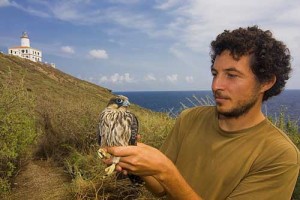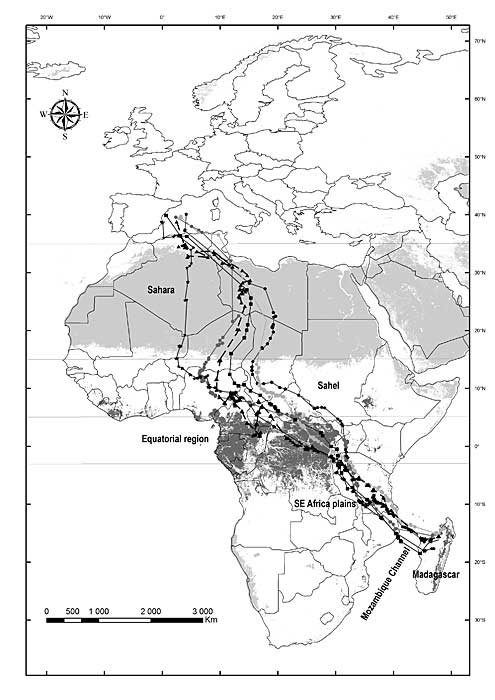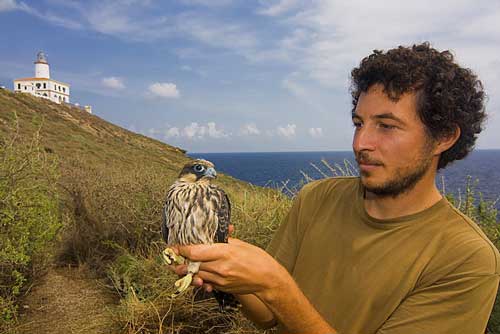New insights on “ecological barriers” in the migration pattern of the Eleonora’s Falcon

We examined the connection between landscape characteristics and behaviour of a long-distance migratory raptor, the Eleonora’s falcon. Our main goal was to test whether long-distance migratory birds adjust their migration programme according to the different characteristics of the habitats crossed during the journey with special emphasis in the so-called ‘‘ecological barriers’’, inhospitable environments where the opportunities to fulfil energy requirements are low or absent and environmental factors could be extremely severe. To this end, 11 Eleonora’s falcons were tracked by satellite telemetry in their ca. 9000 km autumn migration route from colonies located in islands of the Western Mediterranean to their wintering grounds in Madagascar during 2007 and 2008. Our results show that Eleonora’s falcons migrated during day and night-time, adjusting migration speed and daily distance in relation to the crossed region. Unlike other migrant species, Eleonora’s falcons did not avoid ecological barriers by making unnecessary detours around them or converging on narrow corridors. They reached their Madagascar wintering grounds, located at 9000 km ca. from their breeding colonies. Nocturnal migration and higher daily distances were observed when flying across the Sahara Desert and the Mozambique Channel. The circadian pattern of activity budget shows that Eleonora’s falcon relies on an internal navigation mechanism that works during both day and night. Finally, our results suggest that the Sahara is an ecological barrier not only for passerines but also for raptors migrating within the Palaearctic-African flyway.
This summary was provided by kind courtesy of Ugo Mellone. The full reference is as follows:
From the Mediterranean Sea to Madagascar:Are there ecological barriers for the long-distance migrant Eleonora’s falcon?
Authors: Pascual Lo´pez-Lo´pez • Rube´n Limin˜ana •Ugo Mellone • Vicente Urios
Landscape Ecol DOI 10.1007/s10980-010-9460-7 (2010)
If you require a pdf of this paper, please email Ugo Mellone at ugomellone@libero.it






Fascinating to look at the sine-curve pattern of the autumn migration common to each bird. Bravo Ugo!